#published 1969
Text

Swimming pool at Spiegel Publishing House in Hamburg, Germany (1969) Designed by: Verner Panton
#hamburg#verner panton#germany#interior#design#retro#interiors#interior design#aesthetic#1969#1960s#pyschedelic#spiegel publishing house#poolcore#pool#pools#swimming pools
445 notes
·
View notes
Text

Hair (1967)
#frequency 141.12#hairposting#vintage gay#hair musical#this is from the script published in 1969 that is most certainly NOT the 1969 version of the show#*scratches my nose* i think its not exact to the 1967 off broadway production but its closer to that than anything else idkkk i forget *scr
278 notes
·
View notes
Text
Comics timelines are so funny because whenever I feel like college is taking forever I have to remember Dick Grayson went to university in 1969 and dropped out in 1980 and after all that they claimed he’d only been there for one semester. Well no wonder he dropped out, I would also drop out if one college semester took me a decade.
#time crawls. slowly. it inches along. and yet 5 billion things happen during that.#i don’t even know if dick going to Hudson university and dropping out is still canon but it’s always canon in my heart#dick grayson#dc comics#batfam#oh just to clarify for those who aren’t used to comics: IRL the comics were published 1969-1980. in the dc universe it was only a few month#dc continuity#talia al ghul was created in the decade it took for dick to attend school…and Jeff pierce…and wolverine#but in the timeline he’s still 18 the whole time it’s literally just a few months. that’s nuts#*I actually don’t remember if there was a point in the 70s where they had more time passing but in the late 70s/early 80s it’s 1 semester#heroesriseandfall#funny business
472 notes
·
View notes
Text
Paul just compared himself to Genghis Kahn and literally Hitler. So. I guess I'm starting to see how dune actually is a criticism of white savior tropes.
#dune messiah spoilers i guess#it was published in 1969 so ya know. youve had time to read it if you really wanted to.
1 note
·
View note
Text
Konami: 55th Anniversary Teaser | Thursday, 03.14.24
Next week, legendary video game developer and publisher, Konami will celebrate its 55th anniversary.

#konami#konami animation#konami code#video game nostalgia#video game news#55th anniversary#since 1969#video games#video game developer#video game publisher#anime studios#march#march 1969#march 2024#march 14#konami group corporation#konami digital entertainment#コナミ#throwback thursday#thursday teaser#thursday thoughts#video game companies#logo
1 note
·
View note
Text

#mario vargas llosa#conversación en la catedral#mind you this book was published in 1969#absolutely anyone in whatever year: gay people??? who's not a bit gay and a junkie in this age? 🙄#el limeño es maricon y marihuano o algo asi dijo jaime bayly#propuesta para q se expanda al resto del peru dejemos en centralismo!!!#my reads
0 notes
Photo
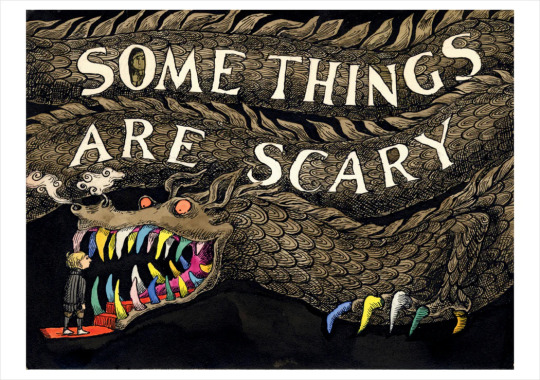
Original art made by Edward Gorey for - but never published with - Florence Heide Parry's 1969 children's book.
13K notes
·
View notes
Text
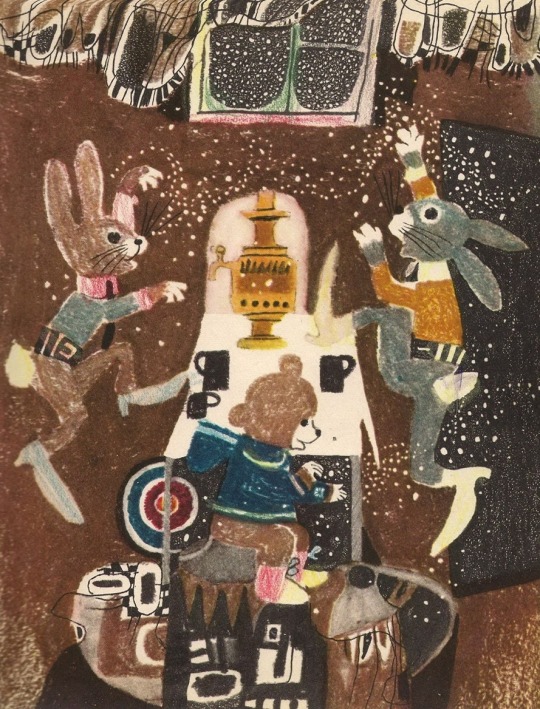
Zbigniew Rychlicki. Illustration for Czesław Janczarski's "Teddy Drop Ear" (published in Warsaw in Russian in 1969).
406 notes
·
View notes
Photo
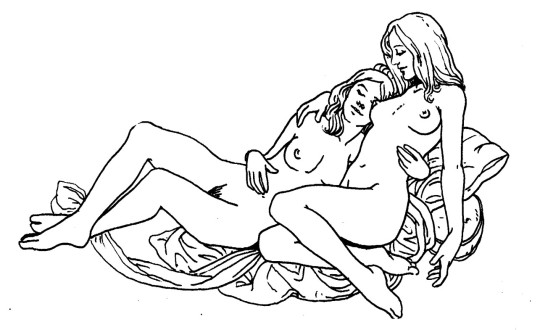
illustration from come out!, the first lgbt periodical published post-stonewall. vol. 1, issue 1, 1969.
#<33#lgbt art#lgbt history#wlw art#wlw history#lesbian art#lesbian history#wlw#sapphic#sapphic art#sapphic history#bi women#queer#queer art#queer history#personal
17K notes
·
View notes
Text

Anna Akhmatova,
Selected poems, originally published 1969
Seaside Sonnet
#mellifluous#anna akhmatova#march#literature#words#quotes#academia#dark academia#quote#lit#books#books and libraries#reading#quote of the day#bookworm#book quotes#prose#booklr#bibliophile#excerpt#light academia#q#poetry#p#fav
248 notes
·
View notes
Text
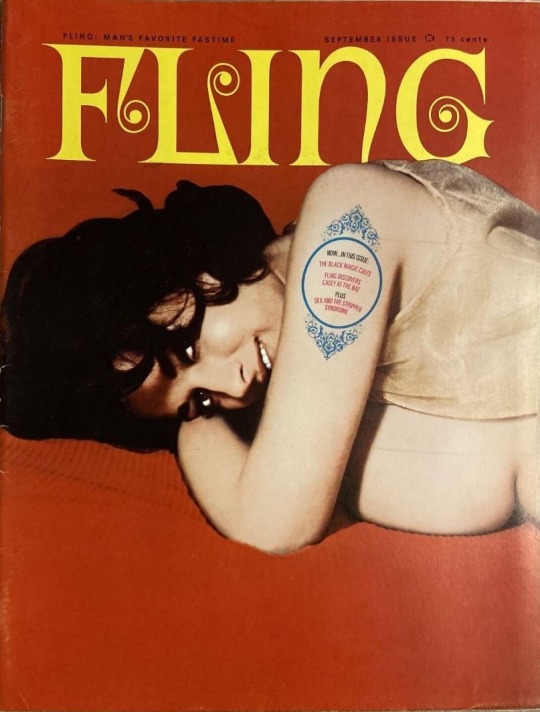
Fling (Man's Favorite Pastime), magazine, Relim Publishing Co., September 1969
#witches#flingers#occult#vintage#fling#fling: man's favorite pastime#man's favorite pastime#man#pastime#relim publishing#september 1969#the black magic cults#black magic#cults#joan brinkman#soft#magazine
31 notes
·
View notes
Text
Some parts of the United States are hitting temperatures "too hot for safe fan use" twice as often as they did decades ago, new research shows.
Analyzing hourly weather data from the past 20 years and between 1950 and 1969, Luke Parsons, a climate scientist at Duke University, and colleagues found that more US residents are being exposed more often to temperatures that are too hot for electric fans to cool people down – and might even be dangerous.
"We find that the geographic extent of temperatures too high for safe fan use is expanding, and the number of safe hours is decreasing," Parsons and colleagues explain in their published paper.
"In particularly hot locations, most afternoon hours during the hottest months of the year can exceed [safe] thresholds," they add.
Continue Reading.
724 notes
·
View notes
Text
His work through EEF was crucial to improving the lives of countless trans people. In addition to funding many of the earliest research projects, his two main contributions were the financial support he gave to the Harry Benjamin Foundation and the first North American gender clinic at Johns Hopkins Hospital in Baltimore, Maryland.
Erickson funded international conferences on trans topics in 1969 (cosponsored by the Albany Trust of London), 1971, and 1973. Later conferences were organized by the Harry Benjamin International Gender Dysphoria Association (HBIGDA) founded in 1979. It changed its name to the World Professional Association for Transgender Health (WPATH) in 2007.
EEF made major contributions to growing public awareness, too, through funding lectures, educational films, newspaper articles, radio, and television programs, and books including Money and Green’s Transsexualism and Sex Reassignment, 1969, and Money and Ehrhardt’s Man, Woman, Boy, Girl, 1972. [...]
After learning about Los Angeles-based gay and lesbian rights group ONE, Inc., which published the highly influential ONE magazine, in 1964, Erickson began giving them money after convincing them to form the nonprofit, tax-exempt Institute for the Study of Human Resources.
With the huge amounts of money he gave them over the years that other gay groups at the time could barely dream of (some $1.5 million in today’s dollars), they published a two-volume Annotated Bibliography of Homosexuality and created a variety of unprecedented gay equality focused research and education programs including lectures, and, ultimately, accreditation in 1981 by the state of California as a graduate degree-granting institution.
1K notes
·
View notes
Text
good article on cat colony behavior. highlights under the cut
Cats recognize colony members vs. non-colony members. Aggression is exhibited by most or all colony members toward unfamiliar cats that are not members of the colony. Thus, as is typical with most social species, non-group members are not allowed to casually approach and enter the group. If non-colony members are persistent in attempts to join the colony, they may eventually be integrated into the group, but only by a gradual process that involves many interactions (Macdonald et al., 1987; Wolfe, 2001). Within the group, a number of affiliative behaviors are exhibited, particularly between cats that are preferred associates. Preferred associates are cats that can be found close together (e.g. less than 1 m) more frequently than they are found with other members of the colony. Preferred associates can be found together in a variety of contexts and locations: they do not simply go to preferred resources at the same time of day, but come together because of the social bond that exists between them (Wolfe, 2001).
In addition to the active social behaviors described above, cats engage in the affiliative social interaction of simply lying together in physical contact. One cat may use another as a ‘pillow’, with the ‘pillow’ readily allowing the position (Fig. 6). This behavior occurs even in conditions of extreme heat, indicating that it occurs as a consequence of social bonding, rather than for thermoregulation.
Affiliative and contact behavior between females and males is not exclusive to the breeding situation. Intact and neutered females and males may be preferred associates, engaging in a variety of affiliative behaviors (Wolfe, 2001). When a female and male are familiar with each other, mating may involve substantial courtship behavior, including allogrooming between the queen and the tom, lying side by side, and rubbing of each other occurring between copulations (Fig. 8). Mating is polygamous. Females mate with multiple males and males mate with multiple females. Yamane et al. (1996) found that, while the largest males had the greatest mating success overall, males that were members of a colony had the greatest mating success within that colony, even if they were small. Thus, social attachments between males and females affect mating success of males.
The critical role of the queen in teaching her kittens hunting techniques has long been recognized. Among free-living cats, the mother starts bringing her kittens prey when they are about 4 weeks of age (Baerends-van Roon and Baerends, 1979). At first she brings them dead prey, and later they are brought live prey. The mother will release the live prey at the nest, providing the kittens with an opportunity to develop their hunting and killing techniques. In the early stages of this learning opportunity, the queen will often demonstrate hunting techniques to the kittens. Both kittens and adult cats are excellent observational learners. They can learn arbitrary tasks that are not species typical behaviors simply by observing another cat engaging in the behavior (e.g. Chesler, 1969). This ability has likely been selected for because rapid learning of critical hunting skills is essential to survival. While the cat is socially gregarious, hunting is conducted in a solitary fashion as a consequence of the typical prey of the cat. The majority of the hunted diet of free-living cats is small rodents, and it requires several small rodents a day to sustain a single cat. Sharing the kill, such as happens with species that hunt large game, is impractical.
128 notes
·
View notes
Text

In 1980 Peter Brown, a former assistant to Brian Epstein who later ran Apple Corps, managed the Beatles and was best man at John Lennon and Yoko Ono’s wedding, started work on the definitive account of the Beatles. With the American author Steven Gaines, he spoke to the three surviving band members alongside wives, girlfriends, managers, friends, hangers-on and everyone else in the Fabs’ universe. The book promised to be the last word in Beatles history. Then in 1983 The Love You Make was published, and all hell broke loose.
“They were furious,” recalls Gaines, 78, still sounding pained at the memory. “Paul and Linda tore the book apart and burned it in the fireplace, page by page. There was an omerta, a code of silence around the Beatles, and they didn’t think anyone would come forward to tell the truth. But Queenie, Brian Epstein’s mother, told us above all else to be honest.”
“Even she didn’t think we would be quite so honest,” adds Brown, 87, his upper-crust English tones still in place after five decades in New York.
Why did The Love You Make, retitled by Beatles fans as The Muck You Rake, incite such strong feelings? The suggestion of an affair between Lennon and Epstein on a holiday to Barcelona in April 1963, only three weeks after the birth of Lennon’s son Julian, had something to do with it, but more significantly it was taken as a betrayal by a trusted insider. Brown and Gaines locked the recordings in a bank vault and never looked at them again — until now.
“Very good question,” Brown says, when I ask why he and Gaines have decided to publish All You Need Is Love, an oral history made up of the interview transcripts from which The Love You Make was drawn. He is speaking from the Manhattan apartment on Central Park West where he has lived since 1971. “When [Peter Jackson’s documentary] Get Back came out, a journalist from The New York Times wanted me to talk. I told him I hadn’t talked about the Beatles since the book was published and suggested he go to someone else. He said, ‘There isn’t anyone else. Paul, Ringo and you are the only ones left.’ And I thought, do I have a responsibility to clear it all up, once and for all?”
After the death of Epstein in 1967, Brown assumed the day-to-day responsibilities of managing the Beatles and Apple Corps. He had on his desk a red telephone whose number was known only to the four Beatles. Unsurprisingly, given his insider status, the interviews make for fascinating reading. Paul McCartney, yet to be asked the same questions about the Beatles thousands of times over, is remarkably unguarded. Asked by Gaines if the other Beatles were anti-Linda, he replies: “I should think so. Like we were anti-Yoko.” On the image the Fabs had for being good boys on tour, he says, “You are kidding,” before going on to reference a notorious incident involving members of Led Zeppelin, a groupie and a mud shark, concluding: “No, not in the least bit celibate. We just didn’t do it with fish.”
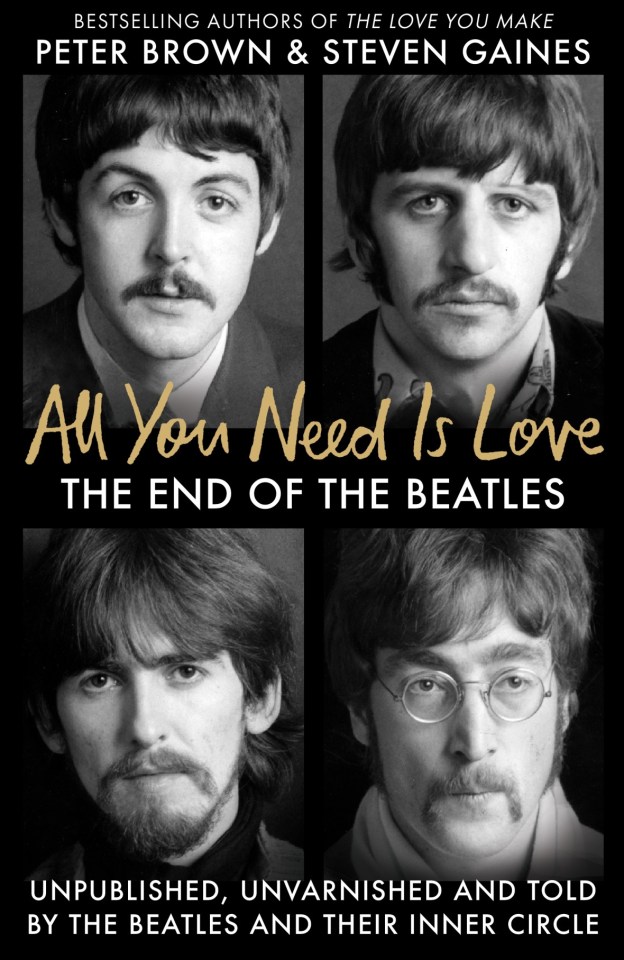
Ono, speaking in the spring of 1981, not long after Lennon was killed in December 1980, reveals that she didn’t sleep with Lennon for the first two years of their relationship — “John didn’t know how to make a move” — and claims that she was blamed by the Beatles camp, George Harrison in particular, for getting Lennon onto heroin in 1969. “Everything we did in those days, anything that was wrong, was my responsibility,” she tells Gaines. But everyone, from the Beatles’ notorious late-period manager Allen Klein to the Greek electronics wizard/hustler “Magic” Alex Mardas — “the Mordred of the Beatles’ Camelot” according to Brown — has their own version of events.
Going through the transcripts reminded Gaines of the long shadow cast by Lennon. “I didn’t realise how sensitive the other Beatles were to John’s opinion,” he says, speaking from his home in the Hamptons, Long Island. “Paul worried about what John would say [in the event Lennon died before being interviewed] and was still longing for his friendship. George said that John didn’t read his autobiography because it was called I, Me, Mine. Those interviews were done before John’s death and Paul’s heart was broken, even then. It wasn’t just the break-up of the Beatles. It was more personal than that.”
From around 1968, the transcripts reveal how the key Beatles duo started to come apart. McCartney’s enthusiasm was only getting stronger. But Lennon grew increasingly bored and disillusioned. “You have to remember that John wasn’t in love with his wife Cynthia,” Gaines says by way of explanation. “He wanted to get away from the life he was leading and that’s why he started to experiment with drugs, all the way up to heroin.”
Brown says Ono was, and probably still is, a distant, mysterious character, exactly the kind of person Lennon was looking for, having done the right thing and married the sensible, quiet Cynthia after she discovered she was pregnant with Julian in 1963. “John told me about meeting this woman, and how frustrated he was that he couldn’t get to know her better; he couldn’t take her to lunch because it would cause gossip. I gave him the key to my apartment so he and Yoko could be together in private and thought, naturally, they were going there to f***. When I went home that evening, the apartment was untouched. They did nothing more than sit on the sofa and talk. That’s what they wanted: to know each other.”
Regarding the long-held, unfair suggestion that Ono broke up the Beatles, Gaines says: “Yoko came along at the right moment to light the fuse, but the dynamite was already packed. They resented her, she was difficult to understand and had a deep effect on John, but they were getting more and more unhappy with each other and needed to have their own lives. As people in the interviews say again and again, [the split] was bound to happen.”
It was Brown who in May 1968 introduced McCartney to Linda Eastman, an ambitious young American photographer whom he knew from his business trips to New York, when she came to London on an assignment to shoot the Rolling Stones. “I was having dinner with Paul at the Bag O’ Nails [a club in Soho] when she turned up, so I introduced them and he was obviously taken with her,” Brown recalls. “The following Friday, May 19, we were holding a party for 12 top photographers at Brian Epstein’s house in London when she walked in. Paul says I didn’t introduce him to his wife … but I did.”
If the book has a villain it is Klein, the New York accountant who took over management of the Beatles and sacked everyone around them, much to McCartney’s horror. As Brown puts it: “He was a hideous person. He even looked like a crook: sloppy and fat, always wearing sneakers and sweatshirts. Everything he didn’t like was ‘for shit’.”
You wonder why Lennon fell for him. “The interviews suggest it is because Allen Klein offered Yoko a million dollars for her movie project,” Gaines says. “She was enticed and John would do anything Yoko said.”
“I asked Mick Jagger to come over and explain to the four Beatles who this Allen Klein was,” Brown remembers. “And John, in his wonderful way, had Klein turn up to the same meeting, which was deeply embarrassing. It made Mick very uncomfortable too.”
Epstein, the man who saw the Beatles’ potential in the first place, is a central figure in All You Need Is Love. It includes a transcript of a recording of him from 1966, not used for the original book. It was in the possession of Epstein’s attorney Nat Weiss, and seemingly made by Epstein to mark the end of the Beatles’ final tour. He claims not only that Lennon felt remorse for the infamous comment on the Beatles being bigger than Jesus — “What upset John more than anything else was that hundreds of people were hurt by that” — but that the Beatles would tour once more. “There’s no reason why they shouldn’t appear in public again,” Epstein claims. They never did, unless you count that rooftop performance on January 30, 1969.
“Brian was driving them around the north of England in his car for a year,” Brown remembers of the early days. “This Jewish guy from Liverpool, who was gay, was with these guys who had been hanging around in Hamburg, so both had interesting backgrounds. They understood each other.”
For Gaines, a self-described “gay Jewish boy from Brooklyn”, Epstein is at the heart of the story. “Brian never felt the love of a real relationship. Then he found the Beatles. Everyone thought it would be just another of his phases, but he had tremendous feelings for John, both sexual and intellectual, and that’s what really pushed him. If there was one thing that started the whole thing off, it was Brian’s love for John Lennon.”
That love affair was the contentious issue of the original book. In his interview, McCartney says of Lennon going to Spain with Epstein: “What was John doing, manipulating this manager of ours? Sucking up to him, going on holiday, becoming his special friend.” It wasn’t the suggestion of a homosexual relationship that was troubling McCartney, but the balance of power tilting in Lennon’s direction.
“Paul wanted to be in charge, and he deserved to be because he was the motor, the driving force,” Gaines says. “Paul felt that John would steal away the power. He felt threatened by John’s relationship with Brian.”
“Paul always wanted to be active,” Brown adds. “After Brian’s death the world had to be carried on. Who was going to do that? It wasn’t going to be John, George or Ringo. Brian was my best friend and I was very upset [at his death]. I had to go to the court to convince the magistrate that it wasn’t a suicide, and the following day Paul set up a meeting so we could discuss what we would do next. I said we’d do it next week, and he said, ‘No, it has to be now.’ He was right.”
How did Brown and Gaines feel about the horrified reaction to the book, not just from fans but the Beatles themselves? “The world has changed,” Gaines says, by way of answer. “Now, after all these years, hopefully people can see it as a truthful, loving and gentle book.” It has been decades since Brown spoke to the surviving Beatles and he has not contacted them about this new publication.
What the interviews really capture in eye-opening detail is the story of four young men who became a phenomenon, then had to deal with the fallout as the dream ended. On December 31, 1970, the day McCartney sued the other three to dissolve the partnership, Brown handed in his resignation as the Beatles’ day-to-day manager and officer of Apple Corps. Ringo Starr said to him: “You didn’t want to be a nursemaid any more, and half the time the babies wouldn’t listen to you anyway.” Brown moved to New York and became chief executive officer of the Robert Stigwood Organisation. But the Beatles never fully left him, and in the wake of Get Back — and the news that Sam Mendes is to direct four biopics, one on each Beatle — he decided he had one last job.
“We have finished our responsibilities,” Brown says with quiet authority. “It is the end of the story.”
EXTRACTS
‘It’s like bloody Julius Caesar, and I’m being stabbed in the back!’
Paul McCartney on the Beatles signing Allen Klein as manager against his wishes
[John Lennon] said, “I’m going with [Allen] Klein, what do you want to do about it?” and I kind of said, “I don’t think I will, that’s my roll.” Then George and Ringo said, “Yeah, we’ll go with John.” Which was their roll. But that was pretty much how it always ended up, the three of them wanted to do stuff, and I was always the fly in the ointment, I was always the one dragging his heels. John used to accuse me of stalling. In fact, there was one classic little meeting when we were recording Abbey Road. It was a Friday evening session, and I was sitting there, and I’d heard a rumour from Neil [Aspinall, road manager] or someone that there was something funny going around. So we got to the session, and Klein came in. To me, he was like a sort of demon that would always haunt my dreams. He got to me. Really, it was like I’d been dreaming of him as a dentist.
Anyway, so at this meeting, everyone said, “You’re going to stall for ever now, we know you, you don’t even want to do it on Monday.” And I said, “Well, so what? It’s not a big deal, it’s our prerogative and it could wait a few more days.” They said, “Oh no, typical of you, all that stalling and what. Got to do it now.” I said, “Well, I’m not going to. I demand at least the weekend. I’ll look at it, and on Monday. This is supposed to be a recording session, after all.” I dug me heels in, and they said, “Right, well, we’re going to vote it.” I said, “No, you’ll never get Ringo to.” I looked at Ringo, and he kind of gave me this sick look like, yeah, I’m going with them. Then I said, “Well, this is like bloody Julius Caesar, and I’m being stabbed in the back!”
‘You don’t like to see a chick in the middle of the team’
Paul McCartney on Yoko Ono
Give Yoko a lot . . . that was basically what John and Yoko wanted, recognition for Yoko. We found her sitting on our amps, and like a football team, an all-male thing, you really don’t like to see a chick in the middle of the team. It’s a disturbing thing, they think it throws them off the game or whatever it was, and these were the reasons that I thought, well, this is crazy, we’re gonna have Yoko in the group next.
Looking at it now, I feel a bit sorry for her because, if only I had been able to understand what the situation was and think, wait a minute, here’s a girl who’s not had enough attention. I can now not make this into a major crisis and just sort of say, “Sure, what harm is she doing on the amps?” I know they would have really loved me. You know, we didn’t like Yoko at first, and people did call her ugly and stuff, and that must be hard for someone who loves someone and is so passionately in love with them, but I still can’t — I’m still trying to see his point of view. What was the point of all that?
They’re very suspicious people [Lennon and Ono], and one of the things that hurt me out of the whole affair, was that we’d come all that way together, and out of either a fault in my character, or out of lack of understanding in their character, I’d still never managed to impress upon them that I wasn’t trying to screw them. I don’t think that I have to this day.
How Cynthia Lennon was driven to drink — at an ashram
Alexis ‘Magic Alex’ Mardas on Ono’s love letters to Lennon
Alexis Mardas was also known as Magic Alex, a name John bestowed on him because he was so taken with Alex’s inventions. Alex was handsome, charming, and a charlatan. (He sued The [New York] Times in Britain for calling him a charlatan and settled out of court. He’s dead now.)
[The Maharishi] was fooling around with several American girls. The Maharishi was making all of us eat vegetarian food, very poorly cooked, but he was eating chicken. No alcohol was allowed in the camp. I had to smuggle alcohol in because Cynthia wanted to drink. Cynthia was very depressed. John was receiving letters from Yoko Ono. Yoko was planning to win John. She was writing very poetic and very romantic letters. I remember those letters because John was coming to me with the letters, and Yoko was saying to John that “I’m a cloud in the sky, and, when you read this letter, turn your head and look in the sky, and if you see a small cloud, this is Yoko. Away from you but watching you.”
Poor Cynthia was prepared to do absolutely everything to win John. She was not even allowed to visit the house where John was staying. She was longing for a drink. Now, drinks, they were strictly prohibited in the ashram, but when it was discovered that Maharishi had a drink, I said, “Just a second, at least equal.”
‘He’s become so nasty’
George Harrison on reaching out to John Lennon
What’s wrong with John, he’s become so nasty. It sounds like he hasn’t moved an inch from where he was five or six years ago. I sent Ringo, John, and Paul all a copy of my book. I got a call from Paul. He called me up just to say how much he liked it. I shouldn’t have called it I Me Mine, because that title was a bit much. I sent a copy to John. I’m wondering if he’s actually received it, if he’s received it, he probably doesn’t like it or something offends him about it.
‘I told John that ... it was just a nice feeling’
Yoko Ono advising John Lennon how to take heroin
George said I put John on H, and it wasn’t true at all. I mean, John wouldn’t take anything unless he wanted to do it. When I went to Paris [before I met John], I just had a sniff of it and it was a beautiful feeling. Because the amount was small, I didn’t even get sick. It was just a nice feeling. So I told John that. When you take it properly — properly is not the right word — but when you really snort it, then you get sick right away if you’re not used to it. So I think maybe because I said it wasn’t a bad experience, maybe that had something to do with it, I don’t know. But I mean so, he kept saying, “Tell me how it was?” Why was he asking? That was sort of a preliminary because he wanted to take it, that’s why he was asking. And that’s how we did it. We never injected. Never.
‘It was time’
Ringo Starr on the end of the Beatles
Ringo Starr: Well, I’m pleased it happened because in so many ways, I’m glad it’s not going now. It was time. Things last only so long.
Steven Gaines: The Rolling Stones are [still] going.
Ringo Starr: Yeah, but they’re old men.
(source)
143 notes
·
View notes